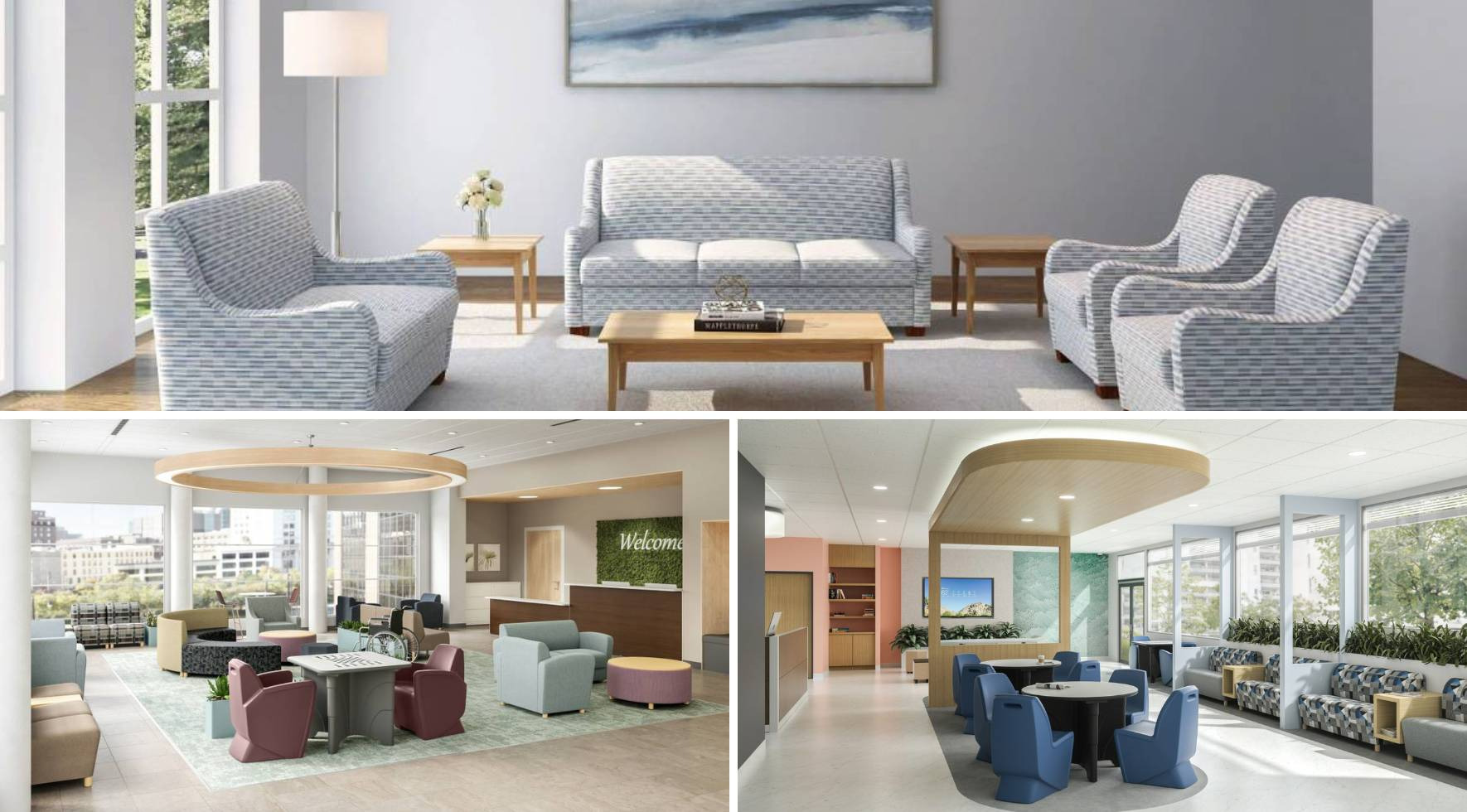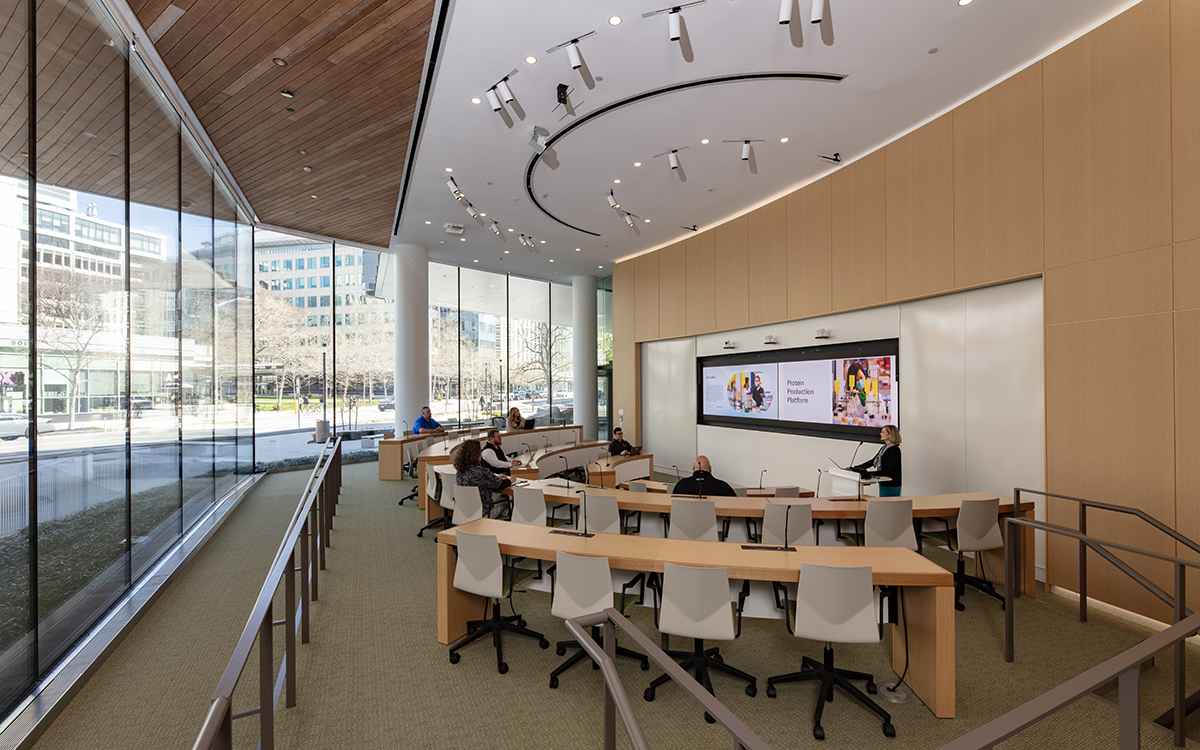Discover the importance of transforming behavioral health spaces for healing and community.
Designing spaces for behavioral health requires careful consideration of various factors to ensure the well-being and recovery of patients. From emerging trends to challenges faced by architects and designers, creating a safe and empowering environment plays a crucial role in promoting positive outcomes.
We spoke with Josh Weissman, President at ModuForm, about the key aspects of behavioral health design and explore how we can foster a sense of belonging and well-being.
What are some emerging trends or innovative approaches in behavioral health design that you find particularly interesting or promising?
Josh Weissman: It’s fascinating to see how the approach to behavioral health design has evolved over time. We’ve shifted from simply housing individuals to focusing on creating spaces that truly support their recovery and well-being.
When it comes to promoting well-being, it’s essential to recognize and address the paradox of satisfying both the physical and emotional aspects of individuals. The physical side of well-being involves creating an environment that prioritizes safety, durability, and cleanliness. This means selecting materials and designing spaces that can withstand the demands of behavioral health settings. On the emotional side, the aesthetics of the space play a significant role in creating a positive and welcoming atmosphere. A visually pleasing environment can contribute to a sense of comfort and ease for patients. It’s about designing spaces that make people feel at ease and promote a sense of belonging.
“We’ve shifted from simply housing individuals to focusing on creating spaces that truly support their recovery and well-being.”
-Josh Weissman, President at ModuForm
What’s important to realize is that there’s no one-size-fits-all solution in behavioral health design. Each type of facility, whether it’s an inpatient psychiatric treatment center or a substance abuse facility, has unique needs and requirements.
Can you define who the behavioral health population is and what the different levels of acuity are?
Josh Weissman: When we talk about the behavioral health population, we’re referring to a broad range of individuals who require support and care for various mental health and substance abuse issues. It’s like a big umbrella that covers a wide spectrum of conditions, including mental health disorders, addiction disorders, developmental disorders, and more. Within this population, you’ll find people living in residential treatment facilities, group homes, or receiving specialized care for their specific needs.
Acuity is a term used to describe the intensity or severity of a person’s condition and the level of supervision they require. In behavioral health settings, the acuity levels can vary significantly. On one end, you have individuals who may be actively suicidal or at risk of causing harm to themselves or others. These individuals require close supervision and intervention to de-escalate potentially dangerous situations.
On the other hand, you have individuals who are relatively stable but still need assistance due to their impairment or condition. These individuals may not pose a direct threat to themselves or others, but they require ongoing support and care to manage their well-being effectively. It’s important to consider the balance between the likelihood of self-harm or harm to others and the level of active supervision needed in these environments.
In your opinion, what are the main challenges that architects and designers face when designing for behavioral health?
Josh Weissman: Architects and designers face a multitude of unique challenges when tasked with designing for behavioral health environments. One of the primary challenges they encounter is the need to create spaces that can effectively accommodate individuals with unpredictable behaviors. This requires ensuring a level of control for patients who may be experiencing crises or episodes.
Safeguarding not only patients, but also staff, is another significant challenge in behavioral health design. Architects and designers must implement measures that protect against intentionally destructive or abusive behaviors within these environments.
Hospitals have long emphasized the importance of infection control within behavioral health settings. In recent years, this focus has expanded even further. There is now heightened awareness of the presence of viruses, bacteria, and pathogens, and they must incorporate measures to effectively mitigate the risk of transmission.
How can these challenges be overcome?
Josh Weissman: To overcome these challenges, architects and designers need to think about the materials and construction. They need to consider various factors such as weight—whether the product is too light or too heavy—and if it can be easily modified. They should also examine seams to ensure they are not prone to picking or allowing fluids to breach. They can also assess the durability of the cover and its resistance to punctures and tears, as well as its compatibility with common disinfectants.
Additionally, furniture needs to be carefully selected so that it can withstand the unique challenges of behavioral health settings, considering the transient nature of the clientele and the high turnover. Since patients typically stay for about five to seven days, there’s a significant challenge when it comes to furniture maintenance and usability. With a high turnover of patients, it’s important to ensure that furniture is easy to clean and sanitize, as well as maintain its functionality. The sense of ownership can be diminished due to the frequent change in occupants, so having furniture that can be quickly refreshed and made ready for the next person is crucial.
How can we promote a sense of belonging among patients in behavioral health settings?
Josh Weissman: It goes beyond just providing a safe and secure space; it’s about creating an environment that fosters hope, empowerment, and socialization. One of the key considerations is finding a balance between social participation and personal privacy. How can we design a space that encourages patients to engage with others while also providing opportunities for personal and private time?
One way to encourage a sense of belonging is through well-designed communal areas. These spaces can serve as gathering points where patients can come together, engage in group activities, or share meals. By incorporating comfortable seating, inviting decor, and appropriate lighting, these communal areas can foster a sense of community and promote social interaction.
At the same time, it’s important to provide spaces for personal retreat and privacy. Designing quiet rooms or designated meditation spaces can offer individuals a peaceful and secluded area where they can reflect, recharge, or engage in personal practices. These spaces should be designed with calming colors, comfortable furnishings, and acoustic treatments to create a soothing and tranquil atmosphere.






